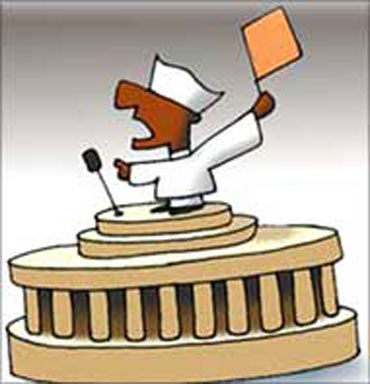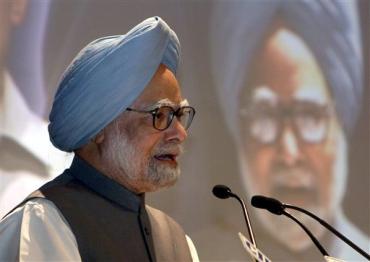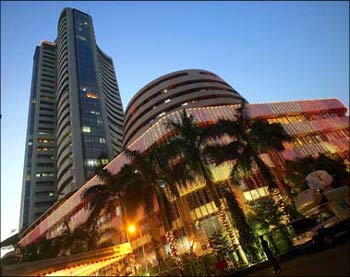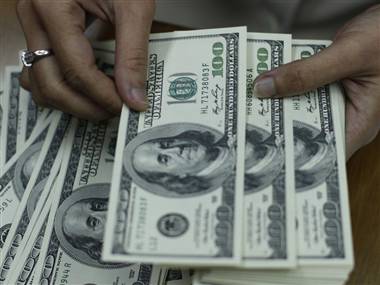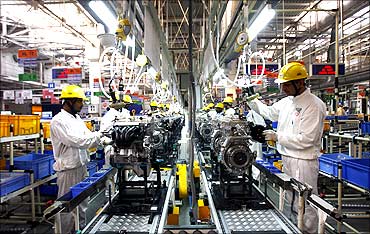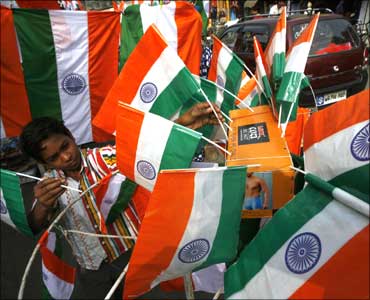 | « Back to article | Print this article |
20 years of reforms: Where UPA has gone wrong
S Narayan, former finance secretary and economic advisor to the PM, says the UPA has done little to carry the reform agenda forward.
It has been two decades since the reform process started in 1991, though there are economists who argue that liberalisation of the economy started earlier, in 1985.
It was well documented that the foreign exchange crisis of 1991 activated the new government into a slew of far-reaching economic reforms that opened up the country and ushered in the age of a fresh economic growth -- a pattern of growth that has remained steady through several successive governments of different hues and political affiliations.
It is interesting to look at the reform process and the consequences of the policy changes that were made.
First, the years of reform were 1991, 1992 and 1993. By the end of the third year, the process had lost steam, there was the Harshad Mehta scandal in the financial markets, and a JPC (Joint Parliamentary Committee) had been constituted.
Click NEXT to read on . . .
20 years of reforms: Where UPA has gone wrong
The reforms themselves focussed on tightening fiscal expenditure, opening up the economy for private sector investment through removal of industrial licensing restrictions, and deep and structured changes in the financial markets through transparent mechanisms for transactions, an independent regulator, and easy access to foreign capital.
The exchange rate innovations that came through resulted in open tradability in current account and also in lessening of restrictions on capital account.
Investment boomed, as also trade, and India grew from an economy with only 8 per cent trade-to-GDP ratio then to over 35 per cent now.
However, it is now clear that these reforms came at a huge cost, whose consequences are being seen now.
Click NEXT to read on . . .
20 years of reforms: Where UPA has gone wrong
Sharp contraction of the budget resulted in reduced outlays for power, agriculture, education and health, and several academics have argued that this was a huge human welfare cost of the 1990s.
State governments, faced with severe contractions of central government Plan assistance, and left with large establishments, ran up huge debts that could not be resolved until 2002 and 2003.
In short, the social sectors, as well as agriculture and power were starved of funds and policy initiatives during the nineties.
The corrections came only through the Electricity Act 2003, the Sarva Shiksha Abhiyan and the Rural Health Mission, all in the decade of 2000-2010. A decade of youngsters has failed to reach their full potential during 1990-2000.
Click NEXT to read on . . .
20 years of reforms: Where UPA has gone wrong
The next set of reforms, in the National Democratic Alliance era, focussed on infrastructure -- roads, telecommunications, airports and power, and the legacy of several of these decisions have benefited the successor governments.
There was also a focus on reforms in tariffs -- customs duties were progressively brought down to international levels, excise duties were normalised and there was considerable easing of the income tax code.
The effort to introduce VAT (Value-Added Tax) in all the states was taken during the NDA government.
The government after 2004 has taken several steps that have attempted to negate the gains of the earlier reforms.
Click NEXT to read on . . .
20 years of reforms: Where UPA has gone wrong
On the tariff front, the income tax and customs and excise tariffs were made more complex between 2004 and 2009, and a heavy dose of service tax was introduced.
There was little relief for the lower income groups. Income tax procedures became more cumbersome and complicated.
In other sectors, the years 2004 to 2009 witnessed a slowdown in the development of roads, and in the introduction of PPP (public-private-partnership) models in the airports and ports sectors.
While China was going ahead with a massive programme in upgrading its railway, very little addition to railway capacity happened in India.
Click NEXT to read on . . .
20 years of reforms: Where UPA has gone wrong
Most importantly, the unfinished agenda of 2004, in the insurance sector, banking sector and in the manufacturing sector remained unfinished.
There was no decision on changes in FDI (foreign direct investment) caps in the insurance or the retail sectors. Several restrictive announcements, like threatening to lower FDI caps for the pharmaceutical sector, and state monitoring of commercial transactions with multinational companies, have become evident.
It is now acknowledged that the UPA -2 has made very little headway in carrying the reform agenda forward. Much more importantly, the presence of the state is much more visible now, across sectors, than it was even five years ago.
Further, there is a serious shortfall in implementation and in governance, which has been commented upon by academics and by media.
In short, there is a requirement for a fresh push, especially in agriculture, education and health which would deliver the inclusive growth -- the target of policy.
Dr S Narayan, IAS (retd.) is former finance secretary, Government of India, and economic advisor to the prime minister.
